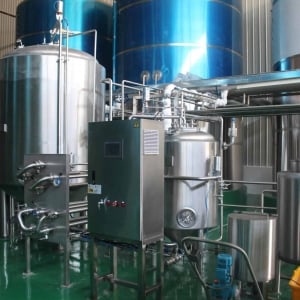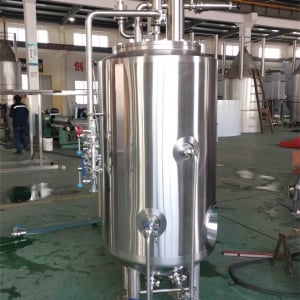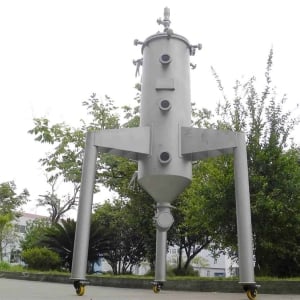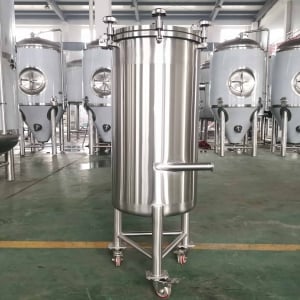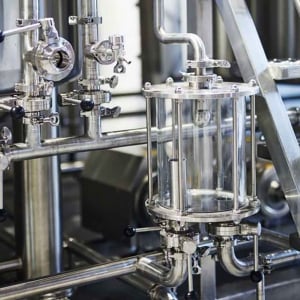Microbrewery Setup
Overview of MicroBrewery Setup
Setting up a microbrewery is an exciting yet intricate journey that requires careful planning and execution. A microbrewery, typically defined as a small-scale brewery producing limited quantities of beer, has grown in popularity due to the rising demand for craft beer. This guide will walk you through the essential aspects of setting up your microbrewery, including equipment, brewing processes, design considerations, and supplier selection.
Equipment Overview
Starting a microbrewery involves investing in specialized equipment. The key pieces of equipment you’ll need include:
- Mash Tun: Where the malted barley is mixed with hot water to extract sugars.
- Lauter Tun: Separates the wort from the spent grain.
- Brew Kettle: Where the wort is boiled and hops are added.
- Fermentation Tanks: Vessels where wort ferments into beer.
- Bright Tanks: For maturing, clarifying, and carbonating beer.
- Cooling System: Maintains the correct fermentation temperature.
- Bottling/Canning Line: For packaging the finished beer.

Equipment Guide
Mash Tun
The mash tun is a critical component in the brewing process. It’s a vessel where malted barley is mixed with hot water to convert starches into fermentable sugars. This process, known as mashing, is essential for creating the wort, the sweet liquid that will eventually become beer.
Lauter Tun
After mashing, the mixture is transferred to the lauter tun. This vessel separates the liquid wort from the spent grains. The design of the lauter tun ensures efficient extraction and clarity of the wort.
Brew Kettle
In the brew kettle, the wort is boiled, and hops are added. Boiling sterilizes the wort and extracts flavors, bitterness, and aromas from the hops. This step is crucial for defining the beer’s profile.
Fermentation Tanks
Fermentation tanks are where the magic happens. Yeast is added to the wort, converting sugars into alcohol and carbon dioxide. These tanks come in various sizes and designs, each suited to different brewing capacities and styles.
Bright Tanks
Bright tanks are used for maturing, clarifying, and carbonating the beer before packaging. They help achieve the desired clarity and carbonation levels, ensuring the beer is ready for consumption.
Cooling System
A reliable cooling system is essential for maintaining the correct fermentation temperature. Temperature control is vital for producing high-quality beer consistently.
Bottling/Canning Line
Packaging is the final step in the brewing process. A bottling or canning line automates the filling, sealing, and labeling of beer containers, ensuring efficiency and consistency.
Equipment Types
| Equipment Type | Description | Purpose |
|---|---|---|
| Mash Tun | Vessel for mixing malted barley and hot water | Extracts fermentable sugars |
| Lauter Tun | Separates wort from spent grain | Ensures wort clarity |
| Brew Kettle | Boils wort and adds hops | Sterilizes and flavors the wort |
| Fermentation Tanks | Vessels for fermenting wort into beer | Converts sugars to alcohol |
| Bright Tanks | Used for maturing, clarifying, and carbonating beer | Prepares beer for packaging |
| Cooling System | Maintains fermentation temperature | Ensures consistent beer quality |
| Bottling/Canning Line | Automates filling, sealing, and labeling of beer containers | Efficient packaging |
The Brewing Process
Mashing
Mashing involves mixing malted barley with hot water to create a mash. This process converts starches in the malt into fermentable sugars. The temperature and duration of mashing affect the beer’s body and sweetness.
Lautering
After mashing, the mash is transferred to the lauter tun. Here, the liquid wort is separated from the solid grain husks. The wort is then collected and moved to the brew kettle.
Boiling
The wort is boiled in the brew kettle. Hops are added at various stages of the boil to impart bitterness, flavor, and aroma. Boiling also sterilizes the wort and removes undesirable compounds.
Fermentation
The boiled wort is cooled and transferred to fermentation tanks. Yeast is added, and fermentation begins. This process typically takes one to two weeks, during which yeast converts sugars into alcohol and carbon dioxide.
Conditioning
After fermentation, the beer is conditioned in bright tanks. This step allows the beer to mature, clarify, and carbonate. Conditioning can take several days to weeks, depending on the beer style.
Packaging
Once conditioned, the beer is ready for packaging. A bottling or canning line automates this process, filling containers with beer, sealing them, and applying labels. Proper packaging ensures the beer stays fresh and appealing to consumers.
Brewing Process Summary
| Stage | Description | Key Actions |
|---|---|---|
| Mashing | Mixing malted barley with hot water | Converts starches to fermentable sugars |
| Lautering | Separating liquid wort from solid grain husks | Collects clear wort |
| Boiling | Boiling wort and adding hops | Sterilizes wort and extracts hop flavors |
| Fermentation | Adding yeast to wort to convert sugars into alcohol and CO2 | Produces alcohol and carbon dioxide |
| Conditioning | Maturing, clarifying, and carbonating beer in bright tanks | Prepares beer for packaging |
| Packaging | Filling, sealing, and labeling beer containers | Ensures freshness and marketability of beer |
Design and Layout of a Microbrewery
Capacity and Space Requirements
The size and capacity of your microbrewery will depend on your production goals and available space. A typical microbrewery setup can range from a small, 1-barrel system to a larger, 30-barrel system. The space required includes areas for brewing, fermenting, packaging, and storage.
| Capacity | Space Requirements | Example System Size |
|---|---|---|
| Small (1-5 barrels) | Limited space, suitable for small operations | 1-5 barrel system |
| Medium (5-15 barrels) | Moderate space, ideal for growing microbreweries | 5-15 barrel system |
| Large (15-30 barrels) | Extensive space, supports larger production | 15-30 barrel system |
Design and Layout Considerations
- Flow Efficiency: The layout should allow for smooth movement of materials and staff.
- Safety: Ensure safe pathways, proper ventilation, and adherence to safety regulations.
- Expansion Capability: Design with future growth in mind to easily add new equipment.
- Aesthetics: Consider the visual appeal, especially if you plan to have a tasting room or tours.
| Design Aspect | Considerations |
|---|---|
| Flow Efficiency | Smooth movement of materials and staff |
| Safety | Safe pathways, proper ventilation, adherence to regulations |
| Expansion | Future growth and easy addition of new equipment |
| Aesthetics | Visual appeal for tasting rooms and tours |
Customization Options for Microbreweries
Microbreweries can be customized to reflect the brewer’s unique style and preferences. Customization options include:
- Equipment Size: Tailor equipment to your specific production needs.
- Material Choices: Select materials like stainless steel for durability and ease of cleaning.
- Automation Levels: Choose between manual, semi-automated, or fully automated systems.
- Aesthetic Elements: Customize the look of your brewery with branding and design elements.
| Customization Option | Description | Benefits |
|---|---|---|
| Equipment Size | Tailor equipment to production needs | Optimized production capacity |
| Material Choices | Choose durable materials like stainless steel | Longevity and ease of maintenance |
| Automation Levels | Select manual, semi-automated, or fully automated systems | Efficiency and consistency in brewing |
| Aesthetic Elements | Customize the look with branding and design elements | Enhanced brand identity and customer appeal |
Supplier Selection and Price Range
Choosing the Right Supplier
Selecting the right supplier is crucial for your microbrewery’s success. Factors to consider include:
- Reputation: Research the supplier’s reputation in the industry.
- Experience: Look for suppliers with extensive experience in brewery equipment.
- Support Services: Ensure the supplier offers installation, training, and maintenance support.
- Price: Compare prices to find a balance between cost and quality.
| Selection Criteria | Description |
|---|---|
| Reputation | Research the supplier’s reputation in the industry |
| Experience | Look for suppliers with extensive experience in brewery equipment |
| Support Services | Ensure the supplier offers installation, training, and maintenance |
| Price | Compare prices for a balance between cost and quality |
Supplier and Price Range Table
| Supplier Name | Equipment Types Offered | Price Range (USD) | Support Services |
|---|---|---|---|
| BrewTech | Complete brewery systems, fermenters, tanks | $50,000 – $500,000 | Installation, training, maintenance |
| CraftBrew Systems | Custom brewing equipment, bottling lines | $40,000 – $450,000 | Installation, technical support |
| MicroBrew Solutions | Small-scale brewing setups, packaging equipment | $30,000 – $400,000 | Training, after-sales service |
| BrewMasters Inc. | Modular brewing systems, cooling systems | $60,000 – $600,000 | Full support package |
Installation, Operation, and Maintenance
Installation Process
The installation process involves setting up your brewing equipment and ensuring everything functions correctly. This phase includes:
- Site Preparation: Ensuring the space is ready for equipment installation.
- Equipment Setup: Installing and connecting all brewing components.
- Testing: Running initial tests to ensure everything operates smoothly.
- Training: Providing training for staff on equipment operation.
Operation Guidelines
Effective operation of your microbrewery requires:
- Routine Checks: Regularly inspecting equipment for any issues.
- Proper Cleaning: Keeping equipment clean to maintain beer quality.
- Monitoring: Continuously monitoring brewing parameters like temperature and pressure.
Maintenance Requirements
Proper maintenance ensures the longevity and efficiency of your brewery equipment. Key maintenance tasks include:
- Scheduled Servicing: Regular servicing of equipment to prevent breakdowns.
- Parts Replacement: Replacing worn-out parts promptly.
- Record Keeping: Maintaining detailed records of maintenance activities.
| Aspect | Description |
|---|---|
| Installation | Site preparation, equipment setup, testing, staff training |
| Operation | Routine checks, proper cleaning, continuous monitoring |
| Maintenance | Scheduled servicing, parts replacement, detailed record keeping |
How to Choose the Right Supplier
Key Factors in Supplier Selection
Selecting the right supplier involves evaluating several factors to ensure you get the best value and support for your microbrewery. Consider the following:
- Quality of Equipment: Ensure the supplier provides high-quality, durable equipment.
- Customer Reviews: Check reviews and testimonials from other microbreweries.
- After-Sales Support: Look for suppliers that offer robust after-sales support, including maintenance and troubleshooting.
- Customization Options: Choose suppliers that offer customization to meet your specific needs.
Supplier Comparison Table
| Supplier Name | Quality of Equipment | Customer Reviews | After-Sales Support | Customization Options |
|---|---|---|---|---|
| BrewTech | High | Excellent | Comprehensive | Extensive |
| CraftBrew Systems | High | Very Good | Technical support | Customizable |
| MicroBrew Solutions | Medium | Good | After-sales service | Moderate |
| BrewMasters Inc. | High | Excellent | Full support package | Highly customizable |
Pros and Cons of Different Microbrewery Setups
Advantages and Limitations
Each microbrewery setup has its unique advantages and limitations. Here’s a comparison to help you decide which setup best fits your needs.
Small-Scale Setup
Advantages:
- Lower Initial Investment: Requires less capital to start.
- Flexibility: Easier to experiment with different beer styles.
- Manageable: Ideal for small spaces and limited staff.
Limitations:
- Limited Production: Smaller capacity limits the volume of beer produced.
- Growth Constraints: May need significant upgrades to scale up.
Medium-Scale Setup
Advantages:
- Balanced Capacity: Good production volume without extensive space requirements.
- Scalable: Easier to scale up compared to small-scale setups.
- Variety: Allows for a diverse range of beer styles.
Limitations:
- Higher Costs: More expensive than small-scale setups.
- Moderate Space Needs: Requires more space and infrastructure.
Large-Scale Setup
Advantages:
- High Production: Capable of producing large volumes of beer.
- Economies of Scale: Lower cost per unit of beer produced.
- Market Reach: Can meet higher demand and expand distribution.
Limitations:
- High Initial Investment: Significant capital required for setup.
- Space and Staff: Requires extensive space and a larger team.
Pros and Cons Table
| Setup Type | Advantages | Limitations |
|---|---|---|
| Small-Scale Setup | Lower initial investment, flexibility, manageable | Limited production, growth constraints |
| Medium-Scale Setup | Balanced capacity, scalable, allows variety | Higher costs, moderate space needs |
| Large-Scale Setup | High production, economies of scale, market reach | High initial investment, requires more space and staff |
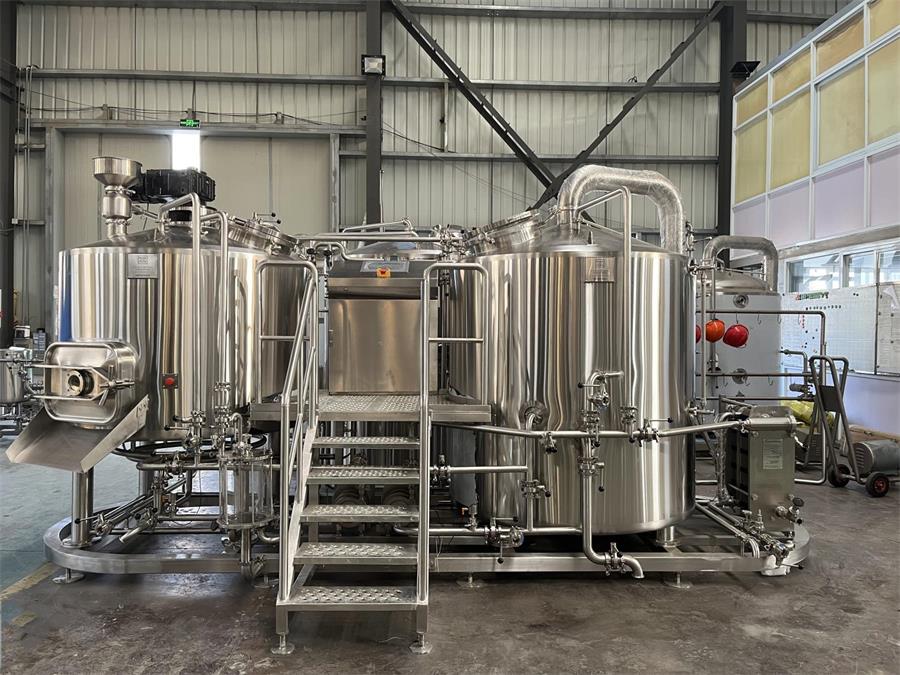
FAQ
| Question | Answer |
|---|---|
| What is the average cost of setting up a microbrewery? | Costs can range from $50,000 to over $500,000 depending on the scale and customization of the setup. |
| How much space do I need for a microbrewery? | Space requirements vary, but a small-scale setup might need around 1,000 square feet, while larger setups can require several thousand square feet. |
| What are the key pieces of equipment needed? | Essential equipment includes a mash tun, lauter tun, brew kettle, fermentation tanks, bright tanks, cooling system, and bottling/canning line. |
| How long does the brewing process take? | The brewing process, from mashing to packaging, typically takes 2 to 4 weeks, depending on the beer style. |
| Can I customize my brewing equipment? | Yes, many suppliers offer customization options for equipment size, materials, automation levels, and aesthetic elements. |
| What should I consider when choosing a supplier? | Consider the supplier’s reputation, experience, support services, and price when making your decision. |
Conclusion
Setting up a microbrewery is a rewarding venture that combines passion for craft beer with business acumen. By understanding the essential equipment, brewing processes, and design considerations, you can create a successful and efficient microbrewery. Careful supplier selection and customization options further ensure your brewery meets your specific needs and goals. Whether you’re starting small or planning for a larger operation, this guide provides the foundational knowledge to embark on your microbrewery journey. Cheers to brewing your success!




